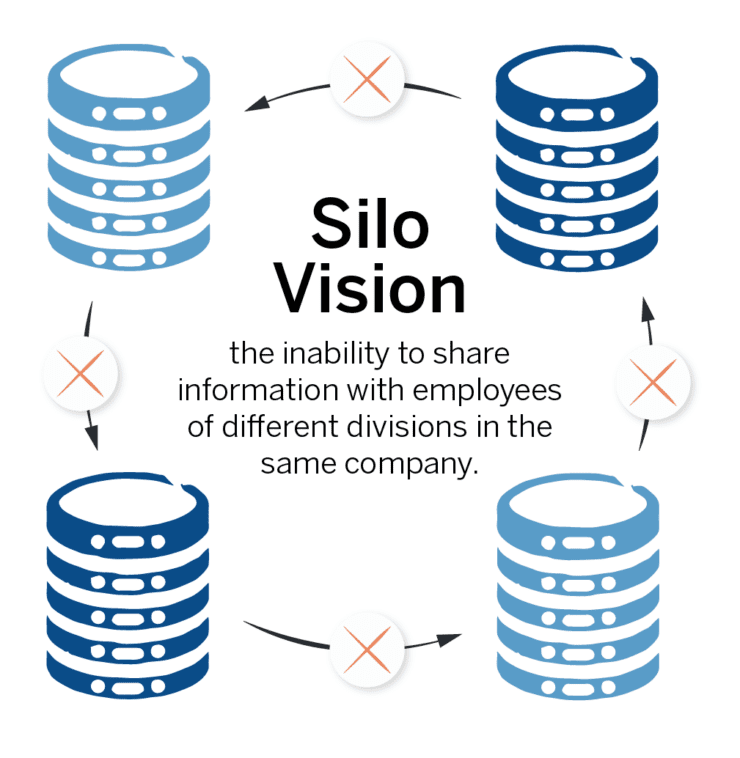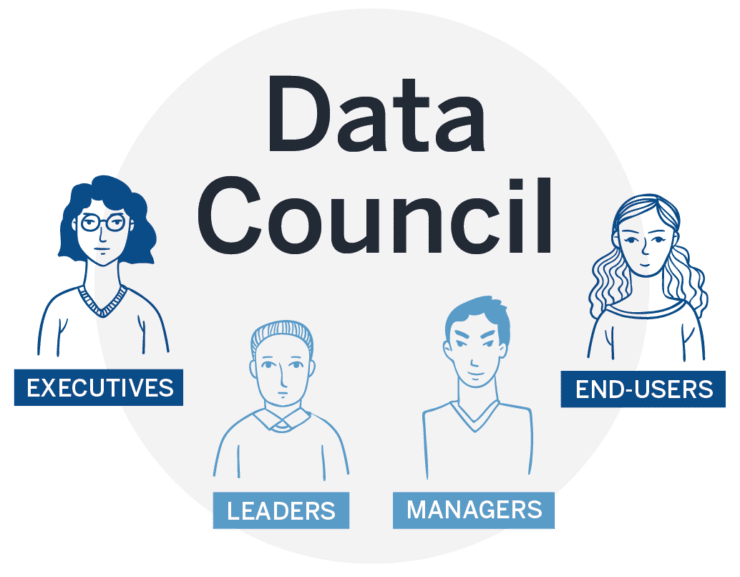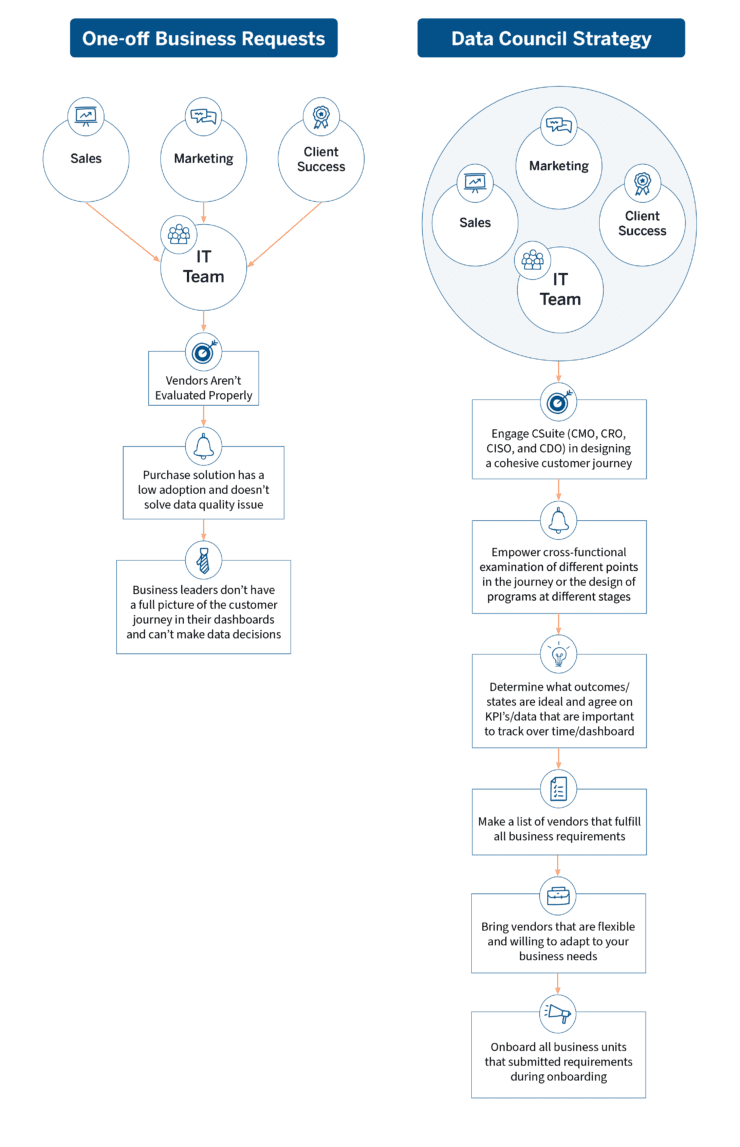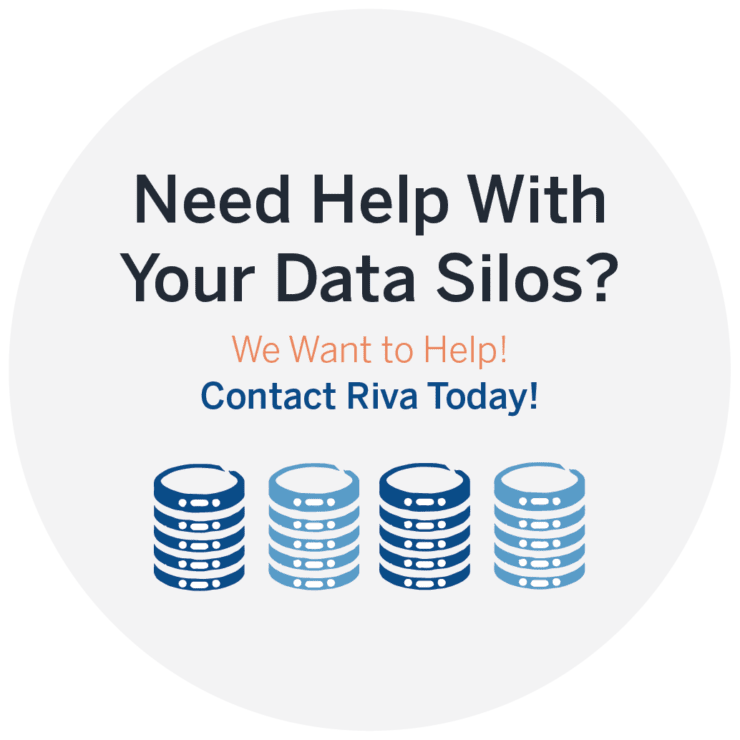If you’ve ever experienced tunnel vision—where you become so fixated on a single idea that you simply can’t see anything else—the concept of silo vision (which we just invented) is likely to ring some bells. In fact, silo vision is really just a corporate flavor of its tunnel-dwelling counterpart, where individuals on enterprise teams seek customer data solutions that will solve their specific challenges—without contemplating the needs of anyone else in the organization.
It’s human nature: you know your job—maybe better than anyone else—and you want the tools necessary to do it as well as you possibly can. In the workplace, if you can justify what you want as a means to attain broader enterprise objectives, it’s difficult to find fault with that inclination. That’s enlightened self-interest at work—and it’s almost always the driving force behind silo vision.
Silo Vision—and the Proliferation of Single-Purpose Data Spewing Apps
The problem, of course, is that serving the subjective needs of one person, one team, or one department often overlook the needs of others. And because silo vision afflicts nearly every department in every enterprise, it’s common for corporations to make significant investments in data technologies and solutions that serve the needs of end-users with very specialized objectives. Here’s how the phenomenon typically plays out:
- Your siloed business unit—let’s say you’re in sales—recognizes the need to improve the quality of customer data available to your customer-facing employees.
- To address this challenge, a request is generated by the sales department for an application that will help them obtain their specific goals.
- The request comes to you, in the IT/Ops department for evaluation. Because your team’s evaluation is based solely on the information the sales team provides, you are evaluating the request’s potential relevance to sales, with no real understanding of the impact on other business units.
- Assuming C-level spending authorization, the request is evaluated to ensure selected vendors are taking care to assess the business needs while keeping in mind security, flexibility and infrastructure requirements.
- Your team (IT/Ops) makes a decision, and either supports or vetoes the initiative. When approved, you execute on the request, and the enterprise has now invested in another technology solution serving one business unit’s needs.
- You return to your long queue of singularly-focused, single-department, single-solution data quality-related requests, and the cycle repeats itself.

Why This Approach Perpetuates Customer Data Deficiencies
This approach can create data quality and access issues for the organization by introducing new applications that silo data . Responding to business partner requests is a laudable impulse, and if you’ve ever been in that position, you deserve kudos for taking the initiative to make things better for your team and the customers you serve. But the adoption of task-specific rev ops applications often end up creating new data integration challenges and complications for teams at different points in the customer journey.
In essence, when revenue technology adoption is driven by end users seeking solutions based on the goals of their division’s “silo”, IT solves one problem and creates a host of others. Over time, this cycle repeats itself, taxing IT teams with (a) front-end evaluation and (b) the ever-growing challenge of working countless targeted rev ops applications that create layers of complex, enterprise-wide integration challenges. As a result, the raft of small, task-specific rev ops solutions end up compromising—not attaining—enterprise-wide objectives.
How a Data Council Will Improve Data Quality—and Customer Experience
Fortunately, there’s a better way. One that addresses the targeted challenges surfaced by silo vision—and serves the broader objectives of the entire enterprise. Data Councils, when thoughtfully organized and utilized, serve as the backbone of a cross-enterprise strategy that delivers the customer and deal data required for every business unit – while streamlining IT integration efforts, and driving the entire organization forward. Here’s how the strategy takes shape:
- Engage your C-Suite to attain consensus on the key elements of a clear, cohesive customer journey.
- Recruit stakeholder groups enterprise-wide to establish a cross-functional analysis of critical touchpoints throughout the customer journey—and design programs to apply the resources necessary to effectively address customer needs at every stage.
- Establish a clear picture of ideal enterprise outcomes, and establish a customer data-fueled roster of key performance indicators to populate shared dashboards and track over time.
- Develop a list of revenue data ops vendors capable of unifying, governing, and distributing customer data at a level of granularity sufficient to fulfill the unique data requirements of all involved business units.
- Choose those vendors capable of fulfilling specified business unit data needs based on their ability to adapt to your business needs.
- Implement the curated solution—or solutions—and onboard those business units whose requirements informed application and vendor selection.
The data council idea isn’t revolutionary. In fact, it’s rooted in common sense: when siloed business units share their data-centric objectives, identify commonalities, and collaborate in the search for shared solutions with targeted capabilities, everybody wins.
Who Should Your Data Council Include?

Once you’ve won support for the establishment of a data council, you’ll need to recruit a carefully curated team of enterprise leaders to embrace its purpose—and see its important work through. Because a data council requires both high-level strategic insight and a granular understanding of the day-to-day work of every department, the makeup of your data council should include:
- C-Suite executives
As subject-matter experts and keepers of the enterprise’s strategic vision, CTOs, CFOs, COOs, CSOs, CIOs—we could go on, but we won’t—provide key perspectives on overarching business objectives, and a level of authority that ensures the data council’s advice is serious business. - Department managers
Department heads bring a strong combination of both strategic and tactical awareness, and a willingness to advocate strongly for technology purchases that can help them to attain targeted departmental objectives. This balance helps to ensure that data council recommendations serve the balanced objectives of both their particular department and the entire enterprise. - Team leaders
Given their close proximity to tactical, day-to-day activities that drive everything from business development to sales, these leaders have a clear sense of the technologies their teams need to attain their goals. Their insights are invaluable when the time comes to vet technologies for their real-world utility and value. - Technology end-users
Even the most impressive technology will fall short if it’s rejected by those it’s intended to support. For that reason, it’s critically important to include end-users—and end-user input—to ensure your data council’s success.
Naturally, you can’t include everyone listed above. Your data council needs to seek a balanced membership that’s able to evaluate technologies, seek informed input, and make smart recommendations on tight timelines. It’s also vitally important to create an atmosphere of openness and inclusion, where the input of all council members is heard, considered, and factored into recommendations.

Who Benefits From the Creation of a Data Council?
Everyone in the entire enterprise.
While we’re not suggesting that the establishment of a data council is a cure-all, its benefits are significant. Consider how the formation of a data council could help these teams in your enterprise:
- Sales/GTM Teams
As the face of the enterprise, these teams need current, complete, and accurate customer history data. In nearly all enterprises, that data is gathered in through multiple rev and comms platforms—and accessibility is dependent on rev ops solutions that unify and govern that data to ensure the right information is available at multiple points throughout the customer journey. While there are many applications available to serve nuanced situations, only a flexible, robust, scalable rev ops solution offers the flexibility to serve those needs throughout the entire sales process. - Product Development
Products and services are only effective and marketable when they deliver the solutions customers need. Customers routinely express and detail those needs every time they engage with the enterprise—and high performance rev ops makes that information available, at levels of granularity that allow product development teams to deliver high-value solutions that win and retain customers. - Information Technology
While IT teams take pride in their ability to satisfy the technology needs of enterprise stakeholders, each new platform and application introduces new data integration and access challenges – not to mention the flexibility required to serve a large global enterprise. With the right revenue data ops solution, IT can satisfy the multi-dimensional data access demands of every user group in the enterprise—while eliminating the proliferation of single-purpose applications that can overwhelm IT resources. - Data Security/Compliance
Tasked with enterprise-wide data security and compliance oversight, these teams rely on detailed data governance capabilities that prevent sensitive data from falling into the wrong hands. A thoughtfully-specified, enterprise-wide rev ops solution gives these stakeholders the capabilities they need to protect customers from data breach—and enterprises from costly regulatory violations. - Operations
As enterprises grow, so does the importance of administrative oversight over stakeholder use of revenue and communications data. When carefully vetted by an organized data council, a robust revenue data ops solution provides deep analytical capabilities that reveal broad data use patterns—and enable targeted end user behavior observation. - Planning/Finance
When harnessed by robust revenue data operations, customer data offers planning and finance teams clear insights into enterprise stakeholder and customer behavior. These capabilities help to analyze trends, inform revenue projections, and reveal areas for both improvement and growth potential.
Summing up

Once you’re aware of silo vision, you’ll likely see it—and its impact—throughout your enterprise. While establishing a data council requires support at every level of your organization, the benefits of the effort justify the investment. Through a collaborative, comprehensive effort, these councils will help you to source a powerful rev ops solution capable of eliminating the up-front and long-term costs of purchasing, integrating, and maintaining a growing list of single-solution applications and platforms—while delivering the targeted outcomes customer data benefits essential to enterprise-wide success.

